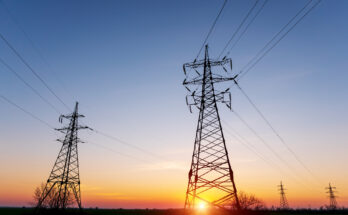To decarbonize iron ore and smelting processes, the mining giant wants to invest in wind and solar power.
Rio Tinto, the world’s largest mining company, has announced plans to use wind and solar electricity to decarbonize parts of its Australian facilities.
From 2022 to 2030, it intends to invest about AUS$7.5 billion (€4.8 billion) on direct capital expenditure to decarbonize Rio Tinto’s assets.
With an investment of AUS$0.5 billion per year from 2022 to 2024, the focus will be on renewable energy for iron ore in the Pilbara and for Australian aluminium smelters.
The company plans to expedite decarbonisation of its iron ore operations in Western Australia’s Pilbara area by deploying 1GW of wind and solar electricity quickly.
According to Rio Tinto, this would reduce CO2 emissions by roughly 1 million tonnes, replace natural gas power for plant and infrastructure, and promote the early electrification of mining equipment.
It plans to electrify the whole Pilbara system, including all trucks, mobile equipment, and rail operations.
This will necessitate the deployment of more gigawatt-scale renewables as well as advancements in fleet technology.
Rio Tinto also stated that plans to convert the Boyne Island and Tomago smelters in Australia to renewable energy were in the works.
This will need a total of 5GW of solar and wind power, as well as a solid firming solution.
Continued demand growth and supply-side restrictions, particularly persistent demands on fossil-fuel generated energy, are driving the shift.
The company’s ELYSIS technology, which eliminates carbon emissions from the smelting process, is nearing commercialization, with a target date of 2024.
It’s also announcing a long-term plan to guarantee it flourishes in a decarbonizing world while also delivering good shareholder returns, as per its policy.
The Group is announcing a new goal of halving Scope 1 and 2 carbon emissions by half by 2030, more than triple its prior goal.
Emissions reductions of 15% are now planned for 2025, five years earlier than previously planned.
These goals are backed up by $7.5 billion in direct expenditures to reduce emissions between 2022 and 2030.
Rio Tinto will increase its investment in R&D and development of solutions that enable its customers to decarbonize, in consideration of the larger carbon impact of the commodities it produces.
Rio Tinto will continue to develop technologies like ELYSIS for carbon-free aluminium and numerous paths to create green steel in collaboration with governments, suppliers, customers, academia, and others.
Rio Tinto would prioritize growth capital in commodities critical for this transition to fulfill extra demand produced by the global push to net zero emissions, with a goal of doubling growth capex to roughly $3 billion per year by 2023.
Rio Tinto’s solid financial sheet, world-class assets, and focus on capital discipline enable it to decarbonize, seek growth, and continue to generate excellent returns to shareholders.
“Rio Tinto is taking action to enhance our company and improve our performance by unlocking the full potential of our people and assets, working in cooperation with a broad variety of stakeholders,” said Rio Tinto CEO Jakob Stausholm.
“All of our commodities are essential for the energy shift, and they continue to gain from urbanization.”
“We have a clear plan to decarbonize our company, and we’re working hard to create solutions that will help our customers and their customers decarbonize as well.”
“We are able to accomplish this while maintaining our objective of providing attractive returns to our shareholders because we have a solid balance sheet and world-class assets that generate significant free cash flows throughout the cycle.”





